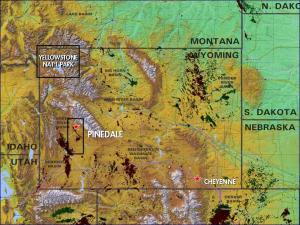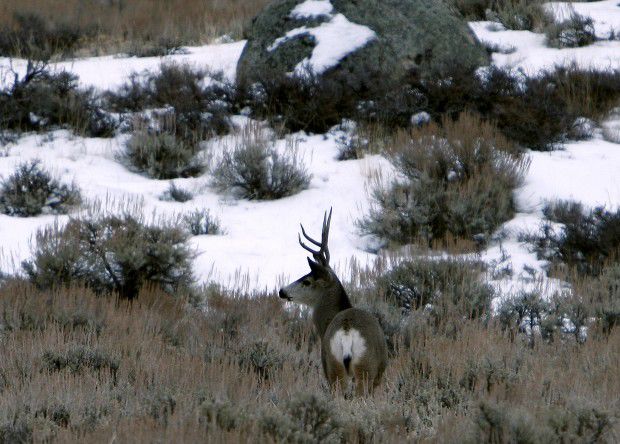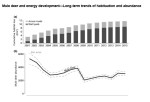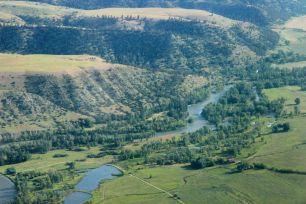An important new study shows that oil and gas activity can have severe negative long-term impacts on native wildlife.
The study, “Mule deer and energy development—Long-term trends of habituation and abundance,” was published last month in Global Change Biology Journal. The authors tracked 187 mule deer for 17 years from 1998-2015 in the upper Green River Basin of western Wyoming, referred to as the Pinedale Anticline. The area is a prime wintering spot for thousands of mule deer, which annually migrate 20-100 miles from summer areas in four different mountain ranges.
The area comprises mostly federal lands (85%) administered by the Bureau of Land Management. Before 2001, this area was relatively undisturbed, with few roads and minimal human activity. Then, in July of 2000, the BLM approved development of 700 producing well pads, 645 km of pipeline, and 444 km of access roads. An additional 4400 wells were approved in 2008.
The results of the study are startling:
-
The deer avoided the wells, staying 2-3 km away during most of the period studied. This avoidance led to a decrease in the habitat available to the deer. Well pad and road construction resulted in direct habitat loss to mule deer winter range of approximately 2,360 acres or 3.5% of the study area.
- The mule deer population on the Pinedale Anticline declined by 36% over the 15-year development period.
- The reduction in the herds led to a decline of 45% in the deer harvest taken by hunters during the period. Dale Gillespie, 57, who has hunted in the area all his life, says he hasn’t shot a deer in a decade. “You will lose generations of hunters,” he said. “If they don’t see anything, they will lose interest in the sport.”
- The remaining deer are much smaller. They have declined in size by 40% since before the oil and gas boom.
The relationship between oil and gas development and the decline of the mule deer population in Wyoming represents one of the many unintended consequences of fossil fuel development. Communities contemplating or beginning development need to be aware of the importance of preserving the natural balance of each community’s way of life — ecological, social, economic — for the long term.





Thank you. This is a great blog and terrifying.
K Armijo
Thank you – sharing this sad but not unexpected news in Pennsylvania so people here can understand what we will lose by developing the Marcellus shale.